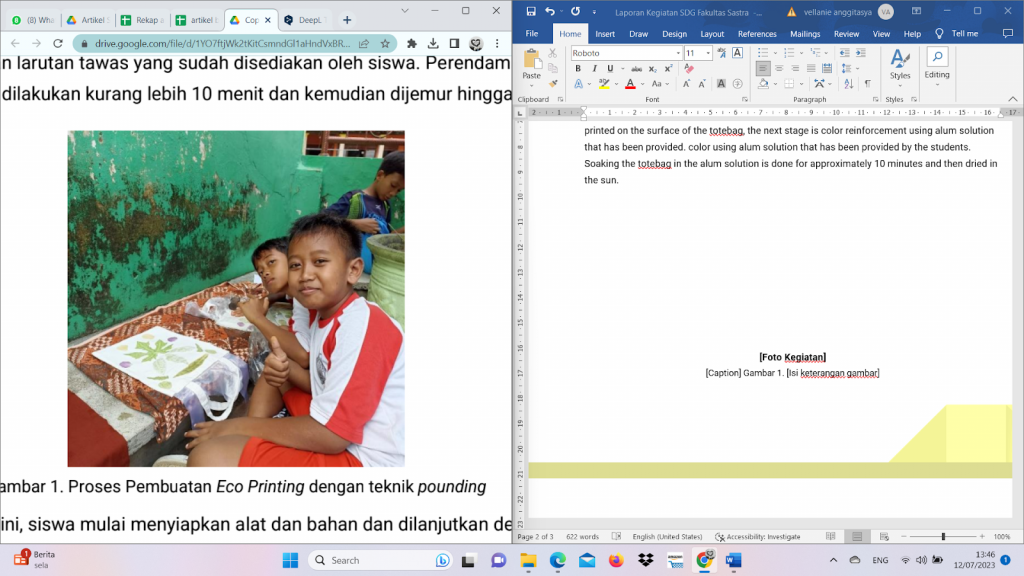
Implementation of the literacy program and efforts to increase student creativity through Eco Printing activities at SDN 1 PELEM, Tulungagung
Eco Printing is a technique of making motifs on fabrics (textiles) using natural materials such as leaves, stalks, roots and flowers to extract natural dyes using certain techniques. Eco Printing activities can be used as a means of improving students’ literacy skills in terms of problem solving in everyday life. Utilization of natural utilization of natural materials as textile dyes is a special virtue of making Eco Print. because it uses environmentally friendly materials and is one of the efforts to reduce environmental pollution caused by chemical dyes. reduce environmental pollution caused by chemical dyes. This activity carried out by all 5th grade students at SDN 1 Pelem which was held on Thursday, May 11, 2023 precisely in the second hour after the second hour. May 11, 2023 precisely in the second hour after break time until completion.
Before carrying out the practice of making Eco Print, students first received material containing the definition, benefits, objectives of introducing Eco Print to students, techniques, as well as tools and materials that must be brought. The material was delivered 3 days before the practice was carried out. After students receive the material and prepare the tools and materials according to the instructions that have been conveyed previously, students are asked to gather in the school yard and line up to be distributed totes. school yard and line up to be distributed totebags as Eco Printing media. The technique that technique used in making Eco Printing is the pounding technique where students arrange leaves or bamboo on the surface of the totebag. or flowers on the surface of the totebag, then covered with a sheet of plastic and pounded until the leaves or flowers are crushed. pukuh until the leaves or flowers are destroyed and leave traces of color on the surface of the totebag. totebag surface. After the motif is printed on the surface of the totebag, the next stage is color reinforcement using alum solution that has been provided. color using alum solution that has been provided by the students. Soaking the totebag in the alum solution is done for approximately 10 minutes and then dried in the sun.
Picture 1. Proses Pembuatan Eco Printing dengan teknik pounding
At this stage, students start preparing tools and materials and continue by selecting leaves and flowers to produce certain motifs and colors. Once selected, the leaves and flowers are arranged on the surface of the totebag according to the students’ creations and imagination. After finishing arranging the leaves and flowers, the next step is to cover with a piece of clear plastic and hit it until the color and motif are printed on the surface of the totebag. The function of the plastic is as a barrier so that the hammer does not come into direct contact with the object of flowers and leaves so as not to cause damage to both the motif and the totebag.